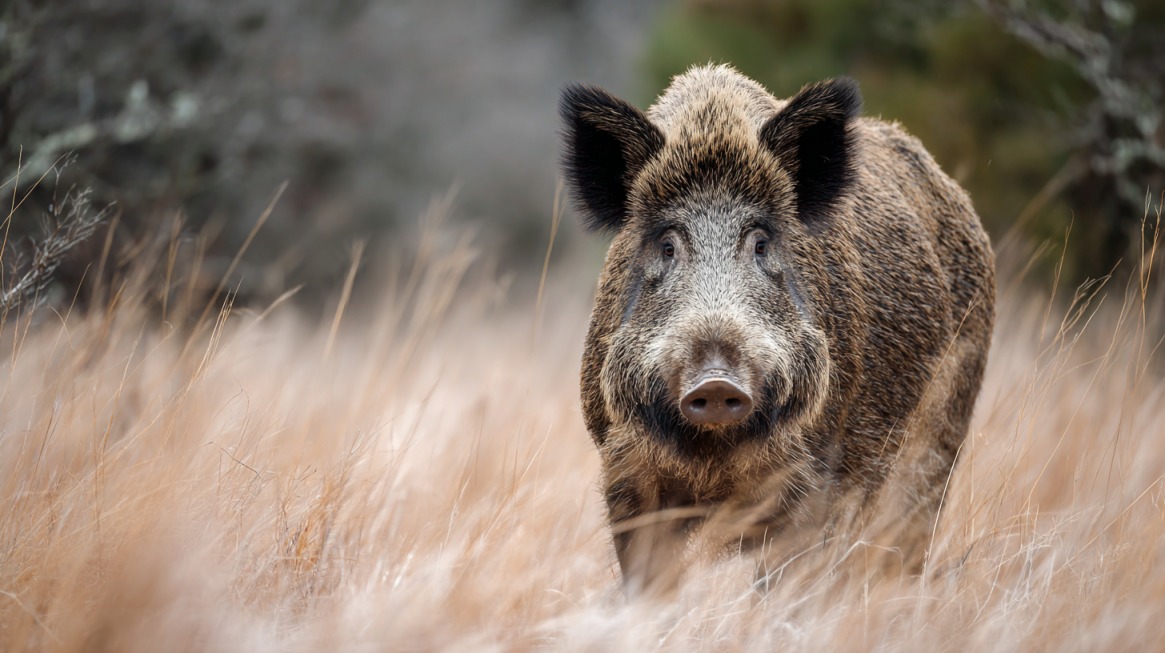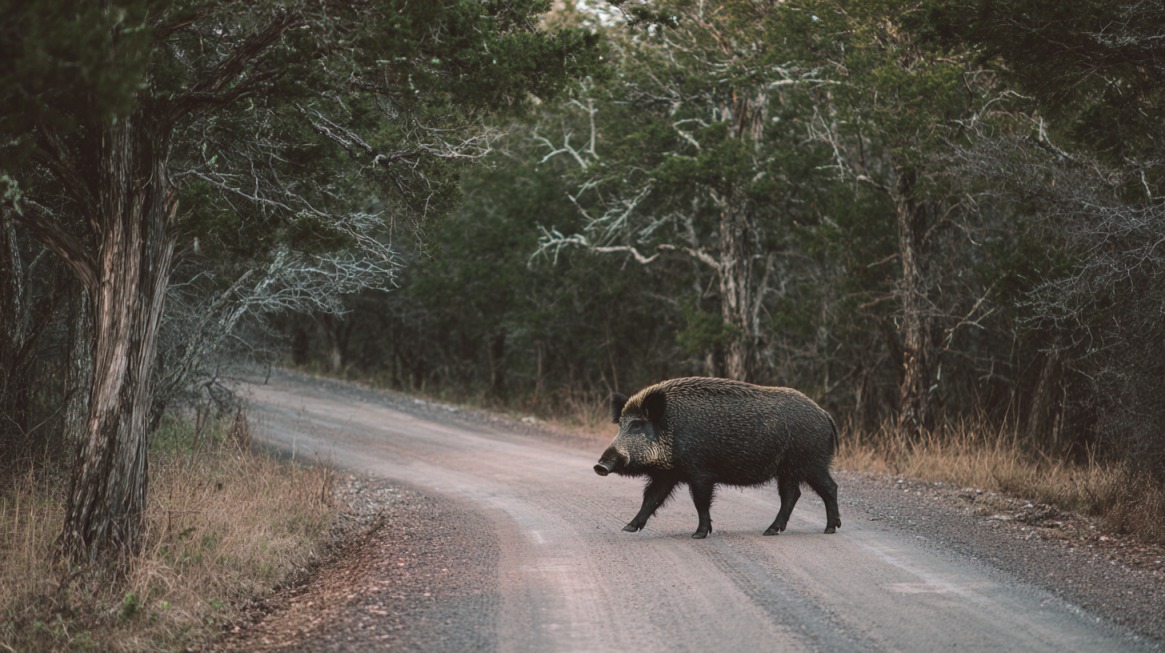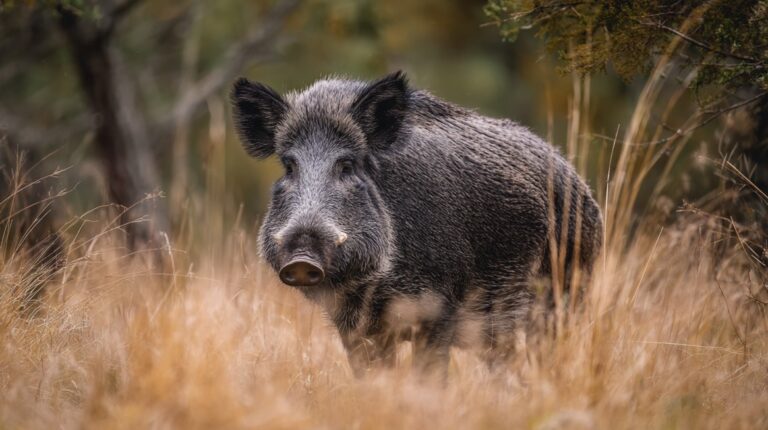Encountering a wild hog has become a pressing issue, with their population estimated at 2.6 million. These animals cause around $500 million in agricultural and property damage every year, making them more than just a nuisance.
Encounters are increasingly common, especially in rural and semi-rural areas. Knowing how to respond safely can help prevent injury and reduce the chance of dangerous situations.
Awareness and preparation are critical for personal safety and for minimizing the impact these animals have on the environment.
What to Do During an Encounter
| Safety Action | Description | Purpose | When to Apply | Risk |
|---|---|---|---|---|
| Stay calm and avoid panic | Keep your composure to make smart decisions and avoid provoking the hog | Prevent escalation | As soon as you spot the hog | Freezing or overreacting |
| Slowly increase the distance without turning your back | Back away while facing the animal to reduce the threat | Create space safely | When a hog notices you but isn’t charging | Moving too fast may trigger pursuit |
| Gain higher ground when possible | Use a tree, rock, or platform to get out of reach | Remove yourself from danger | If a safe elevation is nearby | Slipping or falling while climbing |
| Use legal defensive tools only if necessary | Employ permitted tools if escape is impossible | Stop an imminent attack | When cornered and under threat | Injury or legal consequences |
Calm decision-making remains the most effective defense when unexpectedly meeting a wild hog.
A startled hog may react aggressively if it feels trapped or threatened, and sudden movements can trigger an instinctive charge. Maintaining composure helps you think clearly and assess your options.
Start by controlling your breathing and keeping your posture relaxed. Scan the area for potential escape routes or places to take cover. If you notice multiple hogs, focus on creating space between you and the group rather than singling out one animal.
Avoid locking eyes with the hog, as this can be interpreted as a challenge. Instead, keep your gaze slightly to the side while slowly stepping backward.
@conserve2preserve #greenscreen #feralhogs #wildboars #razorbacks #invasivespecies #species #invasivespeciesremoval #texas #hunting #education #news #environment #wildlife #conservation #wildlifeconservation #nature #florida #animals #invasive #feral #wildhogs #hogs ♬ original sound – conserve2preserve
Moving in a steady, controlled manner reduces the chance of provoking a reaction.
If terrain allows, seek higher ground by climbing onto a tree limb, fence, or other raised surface. Hogs cannot climb, making height a strong defensive advantage. Be sure that whatever you choose is stable and can hold your weight without risk of collapse.
For those who are legally armed and trained, a firearm or bow can serve as a last-resort defensive measure. Shot placement matters because targeting the head or upper chest offers the best chance of neutralizing a charge. Never use a weapon recklessly, as it can escalate danger to yourself or others nearby.
Prioritizing safety while limiting confrontation gives both you and the hog the greatest chance of leaving the scene unharmed.
If a Wild Hog Charges or Attacks

An aggressive hog charge can reach speeds up to 30 mph, leaving very little time to react.
Your primary focus should be on protecting yourself while finding a way to stop or deflect the attack. Fight back when escape is no longer an option. Striking sensitive targets can disrupt the hog’s momentum or force it to retreat.
Vulnerable spots include the eyes, snout, and throat. Even a short hesitation can allow the hog to make contact, so act with urgency. Improvised weapons often become critical in these moments.
- Sticks
- Rocks
- Backpack
The goal is to create a barrier between you and the hog’s tusks or body mass.
If injured, clean the wound as quickly as possible and seek medical attention without delay. Wild hog bites and goring injuries can lead to infections or transmit dangerous pathogens.
Signs of infection to watch for include swelling, redness, warmth, or fever within the days following the incident.
Reporting the encounter to local wildlife officials or Texas Parks and Wildlife not only helps track aggressive animals but also contributes to population control data.
Authorities can then take measures to reduce risk for others in the same area.
How to Prevent a Wild Hog Encounter
Avoidance starts before the animal is even in sight. Thinking ahead about location, time of day, and group size can dramatically lower the odds of a dangerous run-in.
One of the easiest ways to spot potential trouble is by recognizing fresh hog activity. Uprooted soil, churned mud around water holes, or tracks in damp ground are all signs to change course. If these appear, adjust your route immediately rather than pressing forward.
Dense cover, such as brush piles or tall grass, offers perfect concealment for hogs. Open spaces or cleared paths give you the advantage of distance and visibility, making it easier to steer clear of them.

- Walk in small groups so more eyes can scan the area, and more noise signals your presence
- Keep movement steady and avoid rushing blindly into low-visibility zones
- Maintain awareness of where an animal could exit if encountered, avoiding positions that might trap it
Mother hogs are highly protective of their young and can attack without warning. Spotting even a single piglet should trigger an immediate retreat.
Time of day can also influence safety. Hogs are typically active in the early morning and nighttime hours, shifting toward shaded or wet areas during extreme heat. Limiting activity during these high-risk periods reduces the likelihood of surprise encounters.
Final Thoughts
Awareness, preparation, and quick decision-making are key when dealing with wild hogs in Texas. Wild hog is just one of many animals people frequently encounter in rural Texas.
Preventive measures help reduce the risk of unwanted encounters, while calm, controlled actions can keep both you and the animal safe during a close encounter.
Reporting sightings and incidents supports broader efforts to manage populations and limit damage, benefiting both communities and ecosystems.
Respecting wildlife while prioritizing personal safety is the best approach for anyone living in or visiting hog-prone areas.

